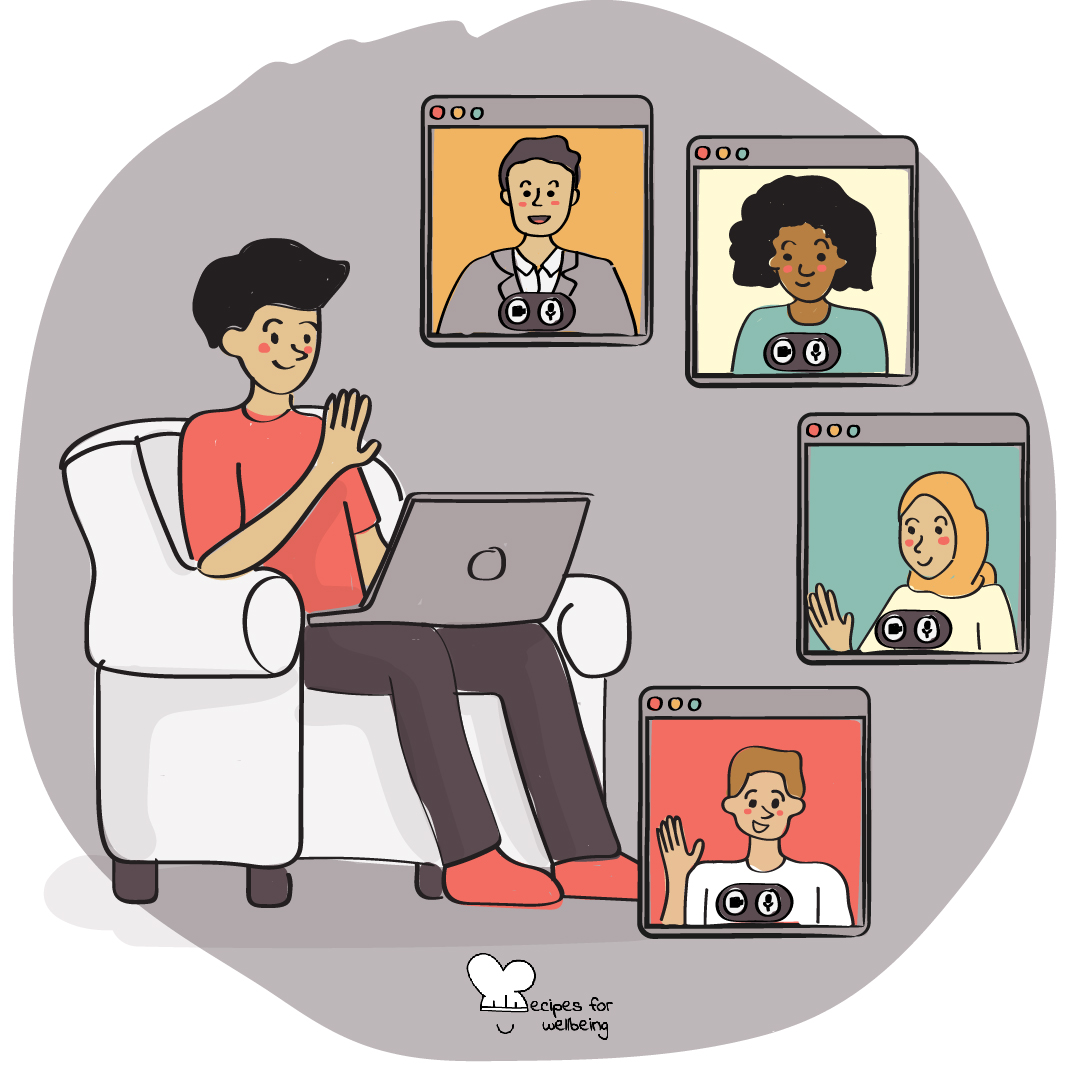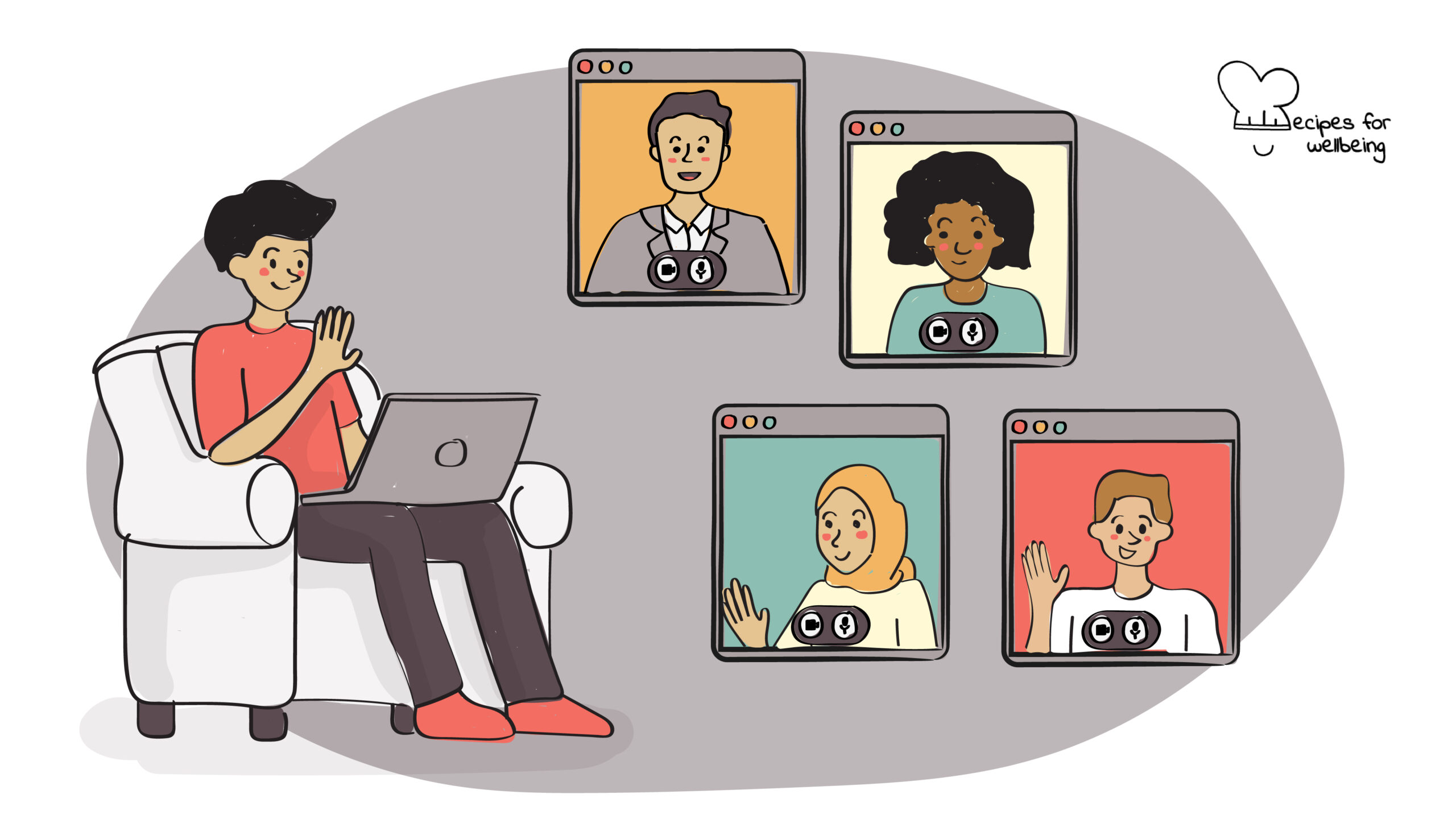
Social universe
Only through our connectedness to others can we really know and enhance the self. And only through working on the self can we begin to enhance our connectedness to others. ―Harriet Goldhor Lerner
👥 Serves: 1 person
🎚 Difficulty: Medium
⏳ Total time: 90 minutes
🥣 Ingredients: A quiet place with no distractions, 2 sheets of paper, 1 pen, book “Feeling Better: Beat Depression and Improve Your Relationships with Interpersonal Psychotherapy” by Cindy Goodman Stulberg and Ronald J. Frey (if you’re curious to find out more about it!)
💪 Nutritional values: Awareness, Connection, Reflection, Prioritisation, Bonding

Social universe
📝 Description
A reflective activity to define your social universe.
Wellbeing is relational and human beings are social beings. Therefore, it is unfair and even unhealthy not to think beyond ourselves. We must be aware of the people who deserve our time, energy, and love. These are the people whose wellbeing influences and/or is influenced by ours. The following recipe has been gifted by our wellbeing content partner Nadya Saib of Wangsa Jelita and has been influenced by the book Feeling Better: Beat Depression and Improve Your Relationships with Interpersonal Psychotherapy by Cindy Goodman Stulberg and Ronald J. Frey.
👣 Steps
Step 1 – Reflecting (10’)
Before working on your social universe, take a few minutes to reflect on the following questions:
- What do you spend most of your time on?
- What do you spend most of your money on?
- What do you think about when you get up?
- What do you stay up at night worrying about?
- What energises you the most?
- What makes you cry the most?
- What do you usually do in your free time?
If you come up with answers like categories (e.g., family, career, education, sports, hobbies) or activities (e.g., working, playing, traveling), then you are on the right track. We are not (yet) going to list down the names of the people, but instead, we are listing down all categories/areas that have taken the most time of your life.
Step 2 – Drawing your social universe (20’)
Now take a blank sheet of paper and place it horizontally. Draw a circle right in the middle and write your name inside it. Then start drawing new circles around the initial circle with your name. You should draw a new circle for each of the areas you defined in the previous step that are important in your life. Remember to write the name of the area in the middle of each circle. At this point, you may start to think about the people who are involved in each area. But instead of listing down all the names of every person whom you encounter, in each area, you should focus on the names of people who influence you the most and/or names of people whom you influence the most. Usually, these tend to be people you see with a certain frequency.
You may think, what about the colleague or even family member whom I don’t get along with yet interact very often? Should I also list them down here? The answer is, yes, please do. You should list the people who are significant in your life regardless of how good/bad your relationship with them. Some of our closest relationships are the most stressful ones and these are the relationships we want to explore. Write the names of the people around each circle (area).
Step 3 – Prioritising (15’)
There are probably more than a handful of names in your Social Universe. So take a look at the names and identify three people whom you want to give more attention to in the year to come. Since it is your social universe, you get to decide who they are. Take some time to think about it carefully before deciding.
Step 4 – Reflecting (45’)
When you are done, for these three people, this is the next set of questions for you to ponder over. Record your answers on another sheet of paper (or in your journal if you keep one).
- How would you describe the relationship? How do you communicate (e.g. face-to-face, by text, email, phone, etc.)? What do you usually talk about (and don’t)? What do you do together? How often do you see each other? Who usually initiates contact? How have things changed over time?
- What do you like about the relationship? What works? What would you miss if you didn’t have that person in your life anymore? If your relationship with the other person is full of conflicts, or you have been hurt by the person, ask yourself, what made you connect in the first place?
- What don’t you like about the relationship? What doesn’t work? Think about when the relationship makes you feel sad, hurt, angry, or disappointed. If you cannot come up with anything you don’t like, pay attention and be curious. Nobody’s perfect, so ask yourself, why the unbalanced view?
- What would you like to be different about the relationship? What would you change to make the relationship better for you and the other person? If you cannot imagine anything will change, ask yourself what you wish bothered you less?

